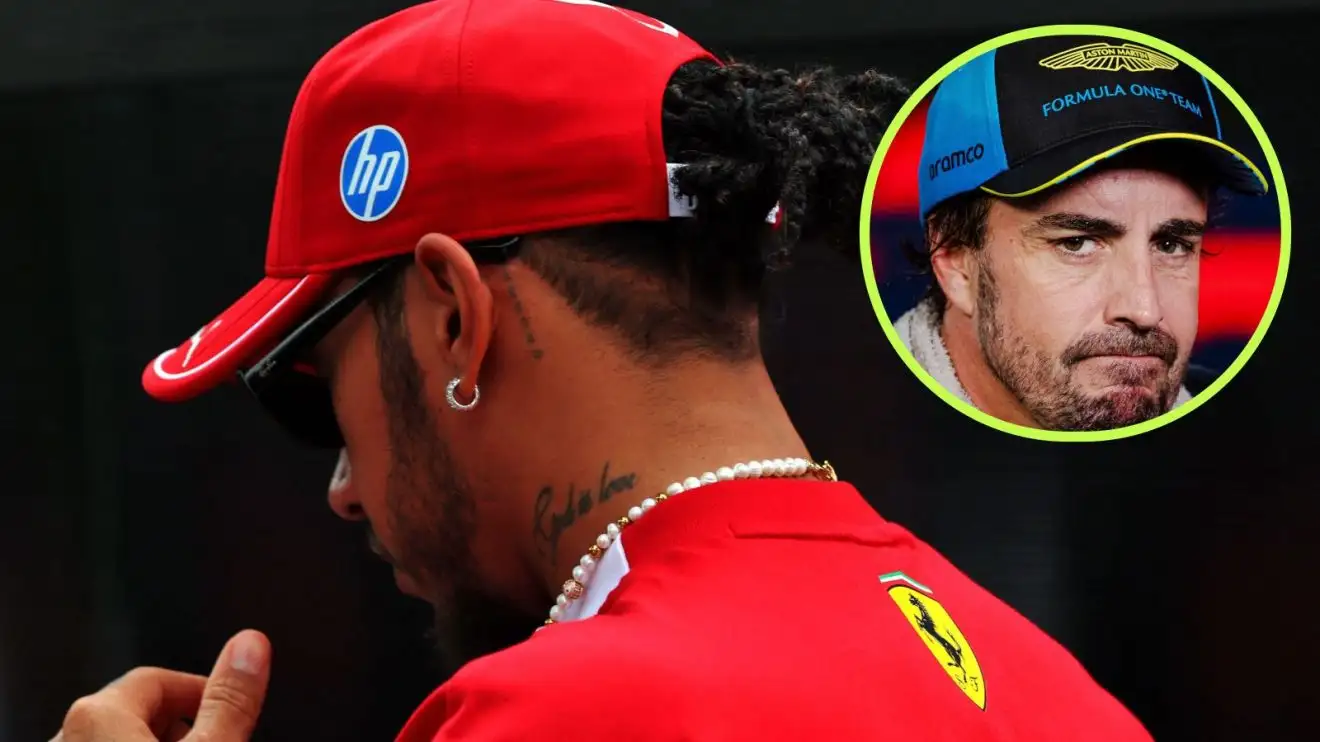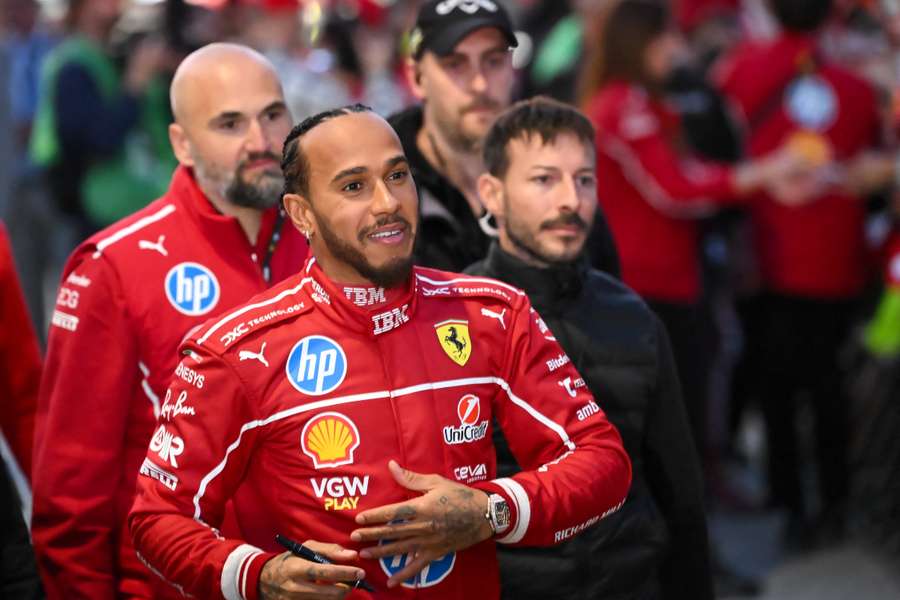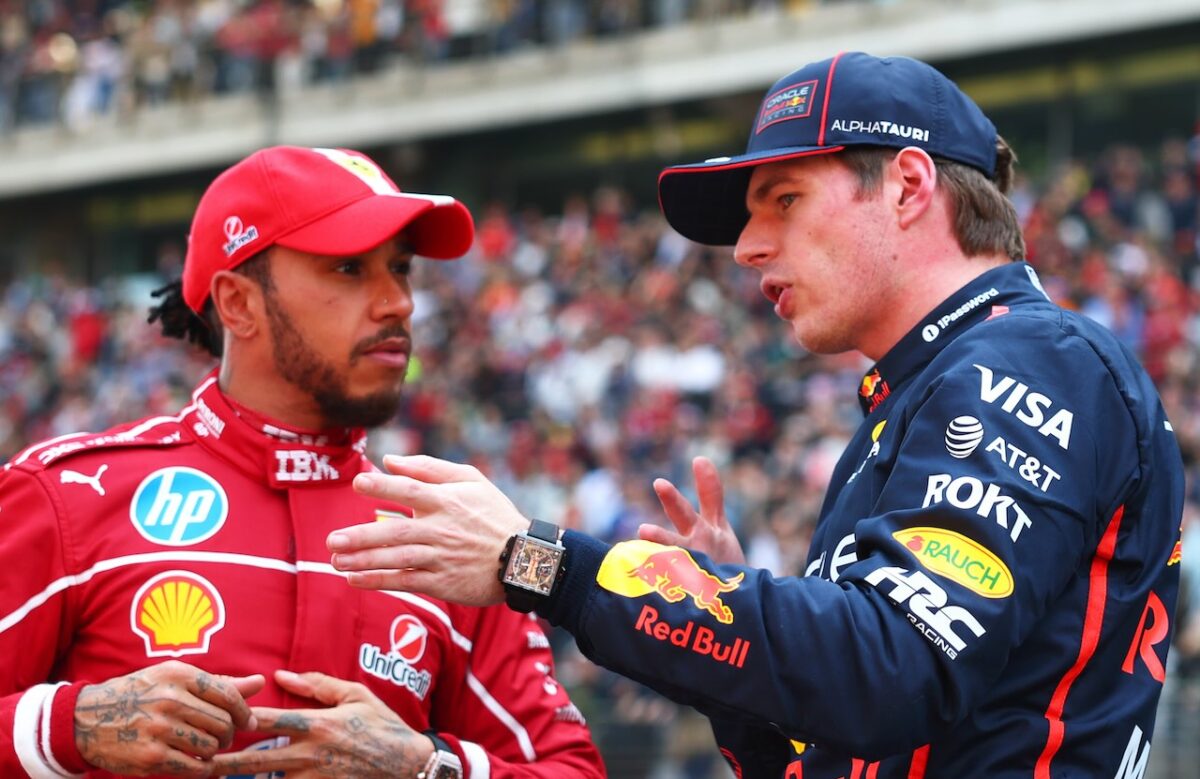The intoxicating world of Formula 1 is a theater of high-speed drama, where fortunes can change in the blink of an eye and rivalries are forged in the crucible of competition.
The recent Singapore Grand Prix was a perfect embodiment of this, a race that had it all: a thrilling comeback, a devastating mechanical failure, a controversial penalty, and a post-race war of words that has set the motorsport community ablaze.
At the heart of it all were two of the sport’s most iconic figures, Lewis Hamilton and Fernando Alonso, whose long-standing rivalry was reignited in spectacular fashion.
But beyond the personal vendettas, a deeper strategic game is afoot, with Red Bull Racing making a shocking admission that could redefine the future of the sport.

The Singapore Grand Prix was a rollercoaster of emotions for Lewis Hamilton. After a challenging start to the race, the seven-time world champion was on a blistering charge, scything through the field with a masterful display of driving. With a fresh set of soft tires, he was the fastest man on the track, effortlessly dispatching his Ferrari teammate and setting his sights on a top-five finish. The tifosi were on their feet, roaring with approval as their new hero carved his way through the pack. But just as it seemed a remarkable comeback was on the cards, disaster struck.
As he closed in on the Mercedes of Kimmy Antonelli, Hamilton’s brakes failed. The heart-stopping moment forced him to drastically reduce his pace, his hard-earned momentum evaporating in an instant. Limping towards the finish line, he was a sitting duck, the seconds he had gained now cruelly ticking away. To add insult to injury, a series of track limit infringements in the final moments of the race resulted in a five-second time penalty, demoting him from a hard-fought seventh to a disappointing eighth place. The beneficiary of this cruel twist of fate? None other than his old adversary, Fernando Alonso.
Alonso, who had been trailing Hamilton, was incensed by the situation. His team radio lit up with a furious tirade, questioning the safety of Hamilton’s car and repeatedly screaming, “I cannot believe it! I cannot believe it!” It was a raw, unfiltered display of the frustration and passion that has defined the Spaniard’s career. When the penalty was finally confirmed, promoting him to seventh, it was a small victory, but one that came with a bitter taste.
For Hamilton, however, the on-track disappointment was just one part of the story. In a statement released after the race, he chose to focus on the bigger picture, emphasizing the resilience and spirit of his Ferrari team. “The media headlines only tell one story, one where we don’t get things quite right or things don’t go our way,” he wrote. “What I have been focused on over the past few months is the other story, the one about how this team responds when things go wrong, how we get back up and we go again.” It was a message of defiance, a testament to his commitment to the legendary Italian outfit and his belief in their shared destiny. He spoke of progress, of learning from setbacks, and of the unwavering determination to deliver the results that the team and its passionate fanbase, the tifosi, deserve. “This is Ferrari,” he declared, “progress alone is not enough to achieve greatness. We need to go further, be better.”

But Hamilton wasn’t done. With the dust still settling on the race, he took to social media to deliver a masterstroke of psychological warfare. In a move that was as subtle as it was savage, he posted an Instagram video featuring a clip from the classic British sitcom “One Foot in the Grave,” in which the perpetually grumpy protagonist, Victor Meldrew, repeatedly exclaims, “I don’t believe it!” While Alonso was not mentioned by name, the F1 community immediately understood the reference. It was a direct, and hilarious, jab at the Spaniard’s on-air meltdown, a piece of mockery that has since gone viral. The post was a stark reminder that in the high-stakes world of Formula 1, the battles are fought not just on the track, but in the minds of the drivers and in the court of public opinion.
While the Hamilton-Alonso saga captured the headlines, another, perhaps more significant, story was unfolding in the background. Red Bull Racing, a team that has shown a remarkable resurgence in the second half of the 2025 season, made a startling revelation about their development strategy. With two wins and two second-place finishes for Max Verstappen since the summer break, the team is clearly on an upward trajectory. Upgrades to the car’s floor in Monza and a new front wing in Singapore have transformed their performance, turning them into genuine contenders. Their pace at the maximum-downforce circuit in Singapore, a track where they have traditionally struggled, was a clear indication that their newfound form is no fluke.
However, this success has come at a price. Red Bull team boss Laurent Mekies admitted that their relentless pursuit of performance in 2025 has forced them to delay work on their 2026 car. With a major overhaul of the technical regulations on the horizon, including new power units and chassis designs, this is a high-stakes gamble. “Of course, it comes at a cost, undoubtedly, for the ’26 project,” Mekies confessed, “but we feel it’s the right tradeoff for us.” He explained that understanding the current car’s potential and validating their development tools and methodology is crucial for the future. In their view, the lessons learned now will provide a stronger foundation for the 2026 car, even if it means starting behind their rivals.

This is a bold and risky strategy. Other teams, including their fierce competitors McLaren, have already shifted their focus to 2026, pouring resources into a car that will be built to a completely different set of rules. Red Bull is betting that the knowledge and confidence gained from perfecting their current machine will outweigh the head start that their rivals will have. It’s a classic tortoise-and-the-hare scenario, a strategic chess match that will play out over the next two seasons. Will Red Bull’s gamble pay off, cementing their place at the front of the grid for years to come? Or will they be left scrambling to catch up, their short-term gains overshadowed by a long-term deficit?
The events of the Singapore Grand Prix and the revelations from the Red Bull camp have added a fascinating new layer to the 2025 Formula 1 season. The renewed rivalry between Hamilton and Alonso, two titans of the sport, promises more fireworks to come. Their on-track battles and off-track mind games are a captivating spectacle, a reminder of the intense human drama that lies at the heart of this technological sport. At the same time, the strategic gambles being made by teams like Red Bull are shaping the future of F1, setting the stage for a new era of competition. As the season heads towards its climax, one thing is certain: the drama is far from over. Every race, every decision, every word spoken will have consequences, not just for this year’s championship, but for the very future of Formula 1.